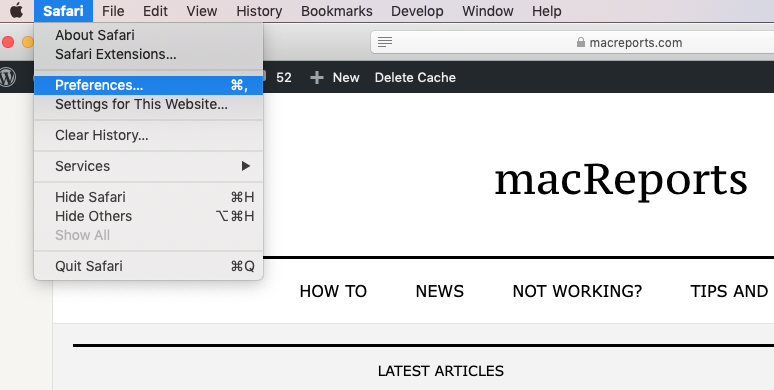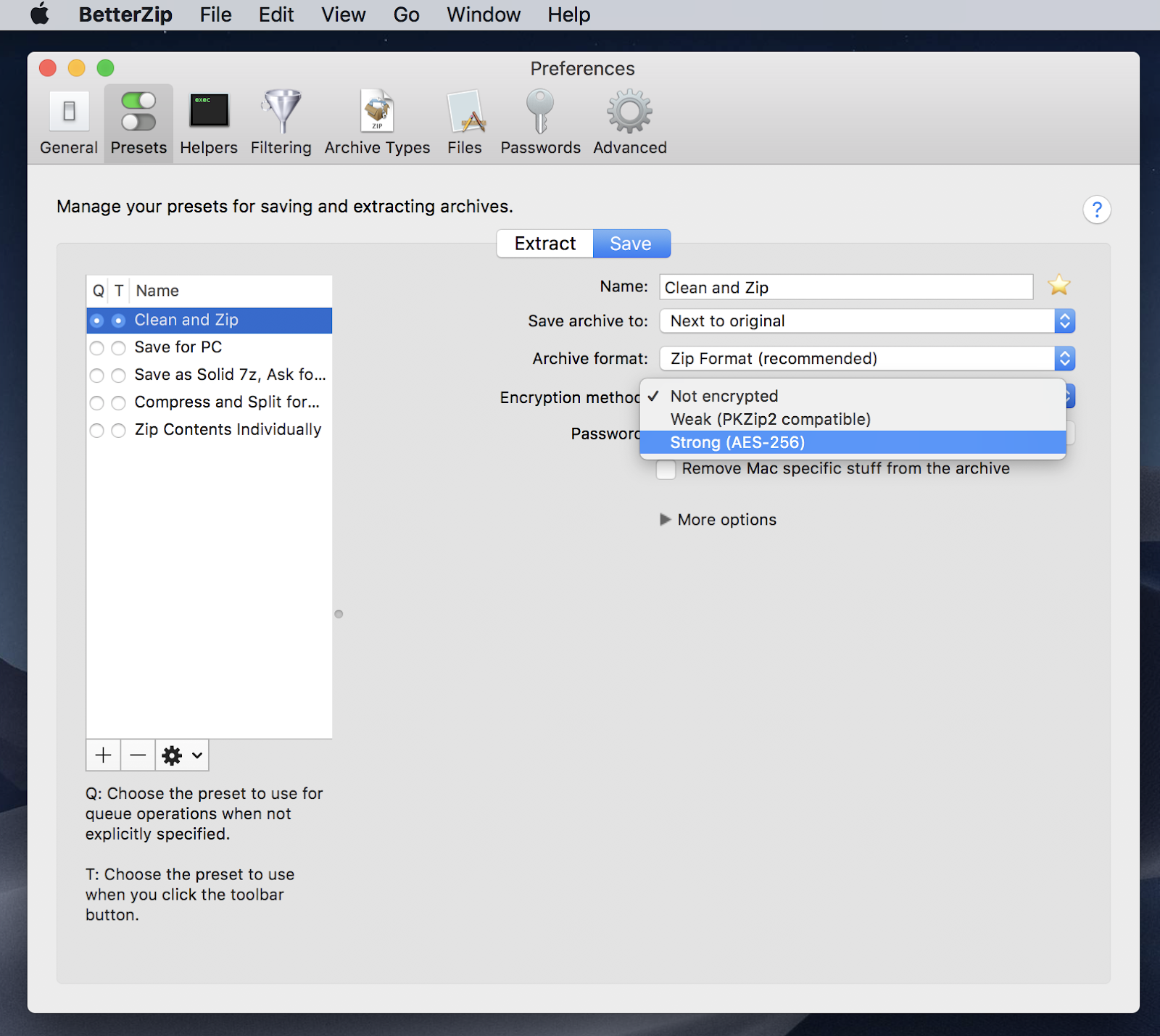- How To Download And Open Zip Files On Mac
- Download Open Zip Files Mac Computer
- Download Open Zip Files Mac Os
Oct 17, 2019 How to find downloads on your Mac in a web browser If the browser where you downloaded a file is still open, you can pull up the download right then and there. In Google Chrome, click the three. Dec 02, 2020 However, unlike Zip and other formats, Rar files require a third-party software to get extracted on Mac. So, these were the 5 Best Rar Files Extractors available for Mac. You can use whichever you like and whichever suits your demands. As a bonus, I’ll present you some other good apps and software to open RAR files on Mac: MacPar Deluxe.
Compressed files are a great way of sharing a lot of content in a small packet. These packets are of .zip and .rar formats. Most of the computers are designedly able to deal with the Zip files. However, to extract Rar files, they need a specialized catalyst. So, in this article, I’m going to tell you how to open RAR files on Mac PC.
Contents

- 2 How to Open Rar Files on Mac?
All You Need to Know About Rar Files
RAR basically stands for Roshal Archive Compressed. Rar files are the second most common archive file formats, after Zip files. These are used in abundance on the Internet for high data transmission and sharing. People use these rar files to lower the overall size and pack together several files and also folders into a single file. A single RAR file is hence small enough to transfer via mail or other sharing means. Just like other compressed archive files, you need to decompress or unzip the rar files after downloading or receiving them.
The file extension of a rar file is .rar (For example, MacMetric.rar)
The most beneficial aspect of RAR files is that they feature strong AES-128 encryption and have higher compression ratios.
Mac can easily decompress the Zip files while it requires a different software to decompress the Rar files.
How to Open Rar Files on Mac?
Mac operating systems are specifically designed to decompress the compressed file formats. They have Apple’s Archive Utility tool that is able to decompress a number of formats like ZIP, GZIP, TAR, etc but, it is not able to decompress RAR. Consequently, you must acquire help from another software in order to open RAR files on Mac.
So I’m presenting you a list of best software available for Mac OS to open RAR Files.
1. Unarchiver
If you are looking for a solution on how to open rar files on mac, then this tool is the best answer to all your problems.
Unarchiver is a free, small and simple to use software that unarchives several different kinds of archive files. Also, it is an open source program and supports formats such as Zip, RAR (including v5), 7-zip, Tar, Gzip, and Bzip2. One added advantage is that it can also open ISO, BIN disk images and some Windows.EXE installers also. If you are a newbie for using Mac or even if you are not but you just want guidance, follow these steps in order to learn how to use Unarchiver:
Step-1: Download and install Unarchiver from Mac App Store.
Step-2: Firstly, open Unarchiver. Once opened, make sure that the box beside “RAR Archive” is check marked, along with all the other archive types you want to open with the Unarchiver. Afterwards, switch to the “Extraction” tab located at the top of the application window and then, select your save location for the resulting file.
Step-3: Now just drag & drop your RAR or any other compressed file onto the Unarchiver’s icon, or right-click the RAR file on your Mac then select Open With and choose The Unarchiver, or double click the RAR file.
The Unarchiver will extract the files in that same folder. You can easily access them anytime you want.
2. UnRarX
UnRarX is a Mac OS X Cocoa software that allows you to decompress rar archives. It can also restore corrupted or missing archives using par2. It is a simple and easy software developed for people who like simplicity. Follow these steps in order to use UnRarX to extract your rar files:
Step-1: Download and install UnRarX from here.
Step-2: Launch the application and drag the rar files you want to extract to the application window. Or, right-click the RAR file on your Mac then select Open With and choose UnRarX.
UnRarX will then extract the rar file in the same folder and you can use them however you desire.

3. iZip
iZip is the best alternative for Unarchiver and UnRarX. It is a free, secure and simple to use program that can easily extract the rar. When you open an archive with iZip it appears as a removable disk in your OS X Finder. You can then easily manage your compressed files using Finder just like all the other files you manage. All view modes including cover-flow work fine. iZip also provides 256-bit AES ZIP encryption for extra security. One added advantage is that iZip has partnered with Files.com to provide secure free file sharing. You simply have to click the Share button to upload and share your files over the Internet. To learn how to use iZip, follow these steps:
Step-1: Download and install iZip from here.
Step-2: Launch the application. Now just drag the rar files you want to extract to the application window and let it decompress it in the same folder. Or, right-click the RAR file on your Mac then select Open With and choose iZip.
iZip treats the archived files as removable storage and makes the task hassle free.
4. StuffIt Expander
StuffIt Expander is a free and amazing program to unzip rar files and several other file formats like Zip, GZIP, BZIP on Mac. It has a simple and easily understandable interface which makes the application loved by everyone. You can either download this application free separately or as an included feature with StuffIt Deluxe pack. To use StuffIt Expander, follow these simple steps:
Step-1: Download and install StuffIt Expander from here.
Step-2: Launch the application and then just drag the rar file you want to extract to application window, or right-click the RAR file on your Mac then select Open With and choose StuffIt Expander.
StuffIt Expander will then extract the files in the same folder. Afterwards, you can enjoy using the files anytime.
5. BetterZip 4
BetterZip 4 is yet another powerful tool to open the compressed archive files including the rar files. With BetterZip 4, you can also create archives and you can even view the content of an archive file without extracting it. The major drawback about this application is that it is not completely free to use but it offers a free-trial period. However, the app is worth every penny for people who need to handle different kinds of files on PC. Follow these steps to learn how to use BetterZip 4:
Step-1: Download and install BetterZip 4 from here.
Step-2: Launch the application and the drag the rar files you want to extract to the application window. You can also right-click the RAR file on your Mac then select Open With and choose BetterZip 4.
BetterZip 4 will then comfortably decompress the archived files within the same folder and you can use the files anytime you wish.
Conclusion
Rar files possess a slight edge over the other compressed archive files. However, unlike Zip and other formats, Rar files require a third-party software to get extracted on Mac. So, these were the 5 Best Rar Files Extractors available for Mac. You can use whichever you like and whichever suits your demands.
As a bonus, I’ll present you some other good apps and software to open RAR files on Mac:
- MacPar Deluxe
- B1 Free Archiver
- RAR Extractor Free
- Simply Rar (Mac)
- Zipeg
That’s all. Start using any one of the tools to extract or open RAR files on Mac OS for free. Let us know if you are facing any issues with any of the tools mentioned in the article.
Related Posts:

When you first purchased your Mac, one of the biggest deciding factors you considered is most probably disk space. But as years go by using your computer, its disk space seems to become smaller and smaller by the day, no matter how diligently you delete unneeded files and unused programs. In the computing world, one could never have too much storage space. There are some ways you could save space on your Mac, including manually deleting files and programs or automatically doing so with the help of apps designed to clean out junk such as Outbyte MacRepair. Another way — albeit less popular — to free up Mac space is to compress and zip files. In this article, we’ll show you how to zip a file on Mac, unzip it, and protect it with a password.
How to Zip a File on Mac
Converting any standard file to a compressed zip file the traditional way is effortless. You can do this to photos, videos, audio files, and documents, among others. Here are the steps:
- In Finder, look for the file or folder you want to compress and zip. Right-click or Ctrl-click on it.
- Select “Compress [name of file or folder].”
- Wait for the compression process to finish. Larger files may take time to end compressing.
- Once done, a new .zip file will appear in the same location as the original file or folder. You will also hear a system alert tone to notify you of the recently completed compression.
You can now send these compressed files or folders via email. You may also choose to delete the original files and folders if you want to save on disk space, but note that you can’t readily open or view the zipped versions. You’ll need to unzip them first (more on that later).
Pro Tip: Scan your Mac for performance issues, junk files, harmful apps, and security threats
that can cause system issues or slow performance.
Special offer. About Outbyte, uninstall instructions, EULA, Privacy Policy.
How to Zip Multiple Files on Mac
You can also compress multiple files and/or folders. Here’s how:
- First, you have to create a new folder in Finder or Desktop. Press Shift + Command (CMD) + N).
- Name the new folder.
- Drag the files you want to zip together to the folder you just created. IMPORTANT: Before dropping the files, hold down Alt to make sure that the files are copied to the new folder.
- Once all the files you want to zip together are in the folder, Ctrl+Click on the folder, then choose Compress.
- A new zip file should now be created.
- Drag the folder (not the zip file) you created earlier to the Trash.
How to Change the Save Location of Your Zip Files
By default, a zipped file or folder will be saved in the same place where the original is saved. But, you may also choose a dedicated destination for all of your compressed files. It is done by opening the compression app. In Mac, it’s called the Archive Utility. A simple Spotlight search can easily find it. After searching for the app on Spotlight, open it. Click the Archive Utility drop-down menu at the top of the screen, then click Preferences. Select the menu named Save archive, then select into. Next, choose your desired destination.
How to Open and Unzip a Zip File on Mac
Opening a zip file to view its contents is pretty straightforward. Just double-click on the file, and it will open. The zip file can still be seen in the location folder, but an unzipped copy will also be created in the same location. Meanwhile, if were sent a compressed file in a format other than zipping, such as .rar, you’ll need to use an app to decompress it, such as The Unarchiver. You can get this app for free from the App Store. Once installed, the app automatically works pretty much exactly like your Mac’s built-in zip tool. Just double-click the archive file, then the files and folders will be extracted and saved in the same location as the archive file.
How to Enable or Disable a Browser From Extracting Zipped ‘Safe’ Files Automatically
Some web browsers, such as Safari, automatically unzip downloaded compressed files that they consider to be safe by default. In Safari, these safe files include movies, pictures, sounds, PDFs, text documents, and archives. However, if you prefer to decompress downloaded zip files yourself, you can opt out of this feature.
In Safari, go to the drop-down menu. Locate and select Preferences, then click the General tab. Down below the window, you will see “Open “safe” files after downloading.” Leave the box checked if you want Safari to decompress these safe files automatically. Otherwise, untick the box.
How to Protect Your Zip Files With a Password
How To Download And Open Zip Files On Mac
Now, here’s the more challenging bit. If you want to conceal some of your files, you can do so protecting it with a password. It is an excellent solution for highly confidential files since you probably won’t bother going through the quite complicated process to protect regular files. You may also do this for files that you are about to send through an unsecured messaging or mailing system. When you encrypt a zip file or folder, anyone who is trying to access the file using whether a Mac or PC will have to enter the password you create. To protect your zip file with a password, you’ll have to do it in the Terminal. As an example, let’s assume that the file is named softwaretested.jpg. Now, follow these steps:
- Open Terminal by going to Applications > Utilities > Terminal. You may also search for it on Spotlight.
- Type in cd Desktop then hit Enter/Return.
- Type in zip -e softwaretested.zip softwaretested.jpg, then hit Enter/Return.
- At this point, Terminal will ask you for the password. Type in the password you have in mind. Note that it will appear as if nothing is happening, but it’s designed this way so that the password will be concealed.
- When done typing the password, hit Enter/Return.
- The Terminal will ask you to verify the password. Type it again, then hit Enter/Return.
- Let Terminal finish the job. Status progress will be shown in the form of a percentage. When done, close the Terminal window.
A Note on Naming Your Zip Files
If you plan to protect a zip file or folder with a password, it is recommended that you don’t put spaces on the file name as much as possible. Telling the Terminal to password-protect a file with a name that has spaces will require you to do extra work. For instance, if your filename is software tested.jpg, you’ll have to type the code so as:
zip -e software tested.zip software tested.jpg
It’s not that difficult, but you should take extra caution whenever dealing with a file with spaces on its filename.
How to Password-Protect a Zip Folder
If it’s a zip folder you want to put a password on, change the -e extension to -er. For instance, zip -er softwaretested.zip softwaretested.
How to Open a Password-Protected Zip File or Folder

If you were sent a password-protected zip file or want to open your encrypted files, just double-click on them as usual, then enter the password when asked.
Download Open Zip Files Mac Computer
Zipping files on Mac is just one of the ways you can save space on your computer and compress big files and folders before sending them to someone else. Know of other file compression tips and methods? Share them with us in the comments below!
Download Open Zip Files Mac Os
See more information about Outbyte and uninstall instructions. Please review EULA and Privacy Policy.